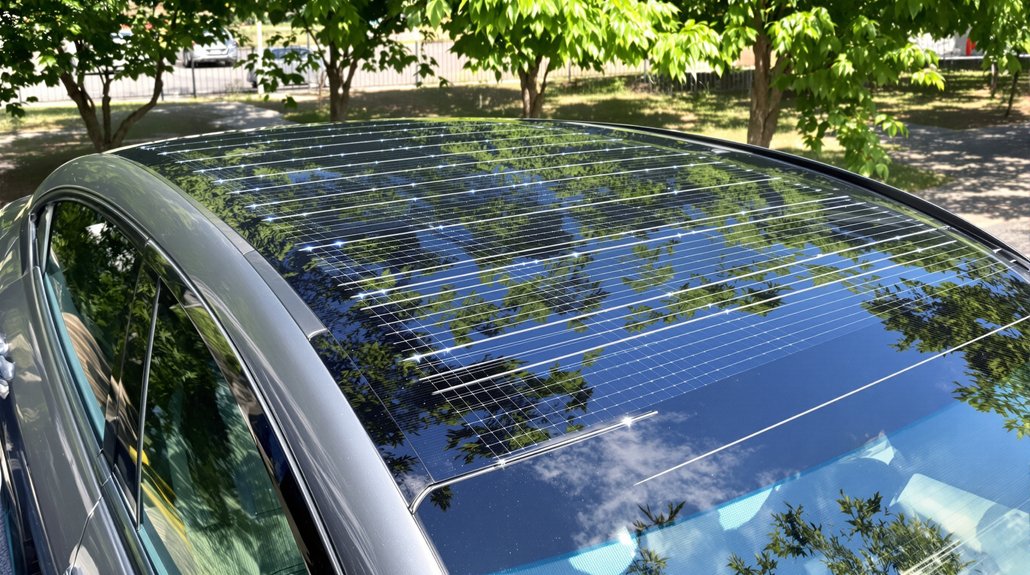A stretch of Georgia highway is doing something roads weren’t supposed to do – generating electricity. The Peach State has installed Wattway solar panels on an 18-mile section of Interstate 85, turning the asphalt into a power plant. These aren’t your grandfather’s solar panels either. They’re 21% more efficient than earlier versions and tough enough to handle an 18-wheeler barreling down at 70 mph.
The panels come from Colas Group and the French National Solar Energy Institute, because apparently the French figured out how to make roads multitask before Americans did. These photovoltaic cells are sandwiched between layers of durable material, protected by patented frames that can take a beating from both traffic and weather. The technology underwent five years of research and development before the first pilot site launched in France in 2015. Georgia’s got 90,000 miles of public roads, so the potential here is massive.
The test site, called The Ray, isn’t just generating power for the sake of it. The system at Peachtree Corners cranks out over 1,300 kilowatt-hours annually, feeding Level 2 EV chargers. That’s right – free juice for electric vehicles. The energy storage system keeps the chargers running at night, because EVs don’t stop needing power when the sun goes down. While these innovative highways overcome some storage challenges typical of renewable energy sources, they’re still subject to geographic and weather limitations.
This isn’t some pie-in-the-sky concept anymore. The technology works on highways, bike lanes, sidewalks, wherever there’s pavement and sunlight. Peachtree Corners is going all-in, integrating solar roads with their smart city setup and autonomous vehicle test lanes. They’re planning solar-powered mobility hubs for e-scooters and bikes too. The city’s Curiosity Lab, an economic development project built on the site of Georgia’s first technology park from 1968, provides the perfect three-mile testing ground for these advanced mobility technologies.
The modular design means cities can start small and scale up. Need to power streetlights? Slap down some panels. Traffic signals going dark during blackouts? Not with solar roads. The enhanced surface provides traction, so drivers won’t be sliding around on slick solar cells.
Georgia’s positioning itself as a clean energy leader, and these solar roads are part of that push. They’re cutting greenhouse gas emissions, reducing fossil fuel dependence, and driving EV adoption. The future of transportation might literally be paved with solar panels. Who knew highways could earn their keep?
References
- https://blog.drawdownga.org/driving-the-future-of-solar-roadways-in-georgia
- https://theray.org/tech/solar-paved-highway/
- https://curiositylabptc.com/press_release/peachtree-corners-smart-city-and-the-ray-install-usas-first-road-surface-solar-panels-on-autonomous-vehicle-lane/
- https://www.cnet.com/roadshow/news/solar-road-us-georgia-electric-car-charging-stations/
- https://www.ecoticias.com/en/america-first-ever-photovoltaic-highway/7145/








